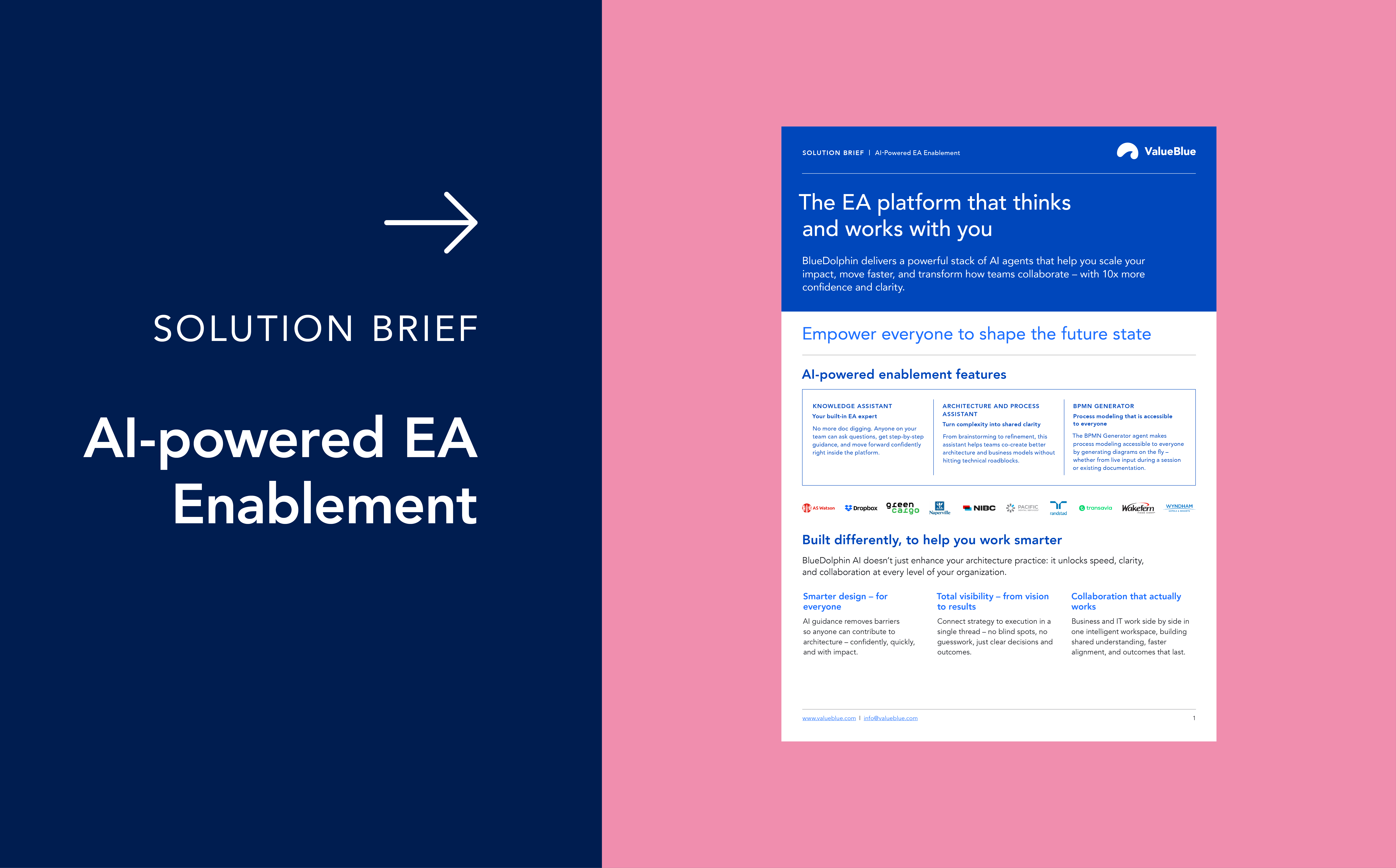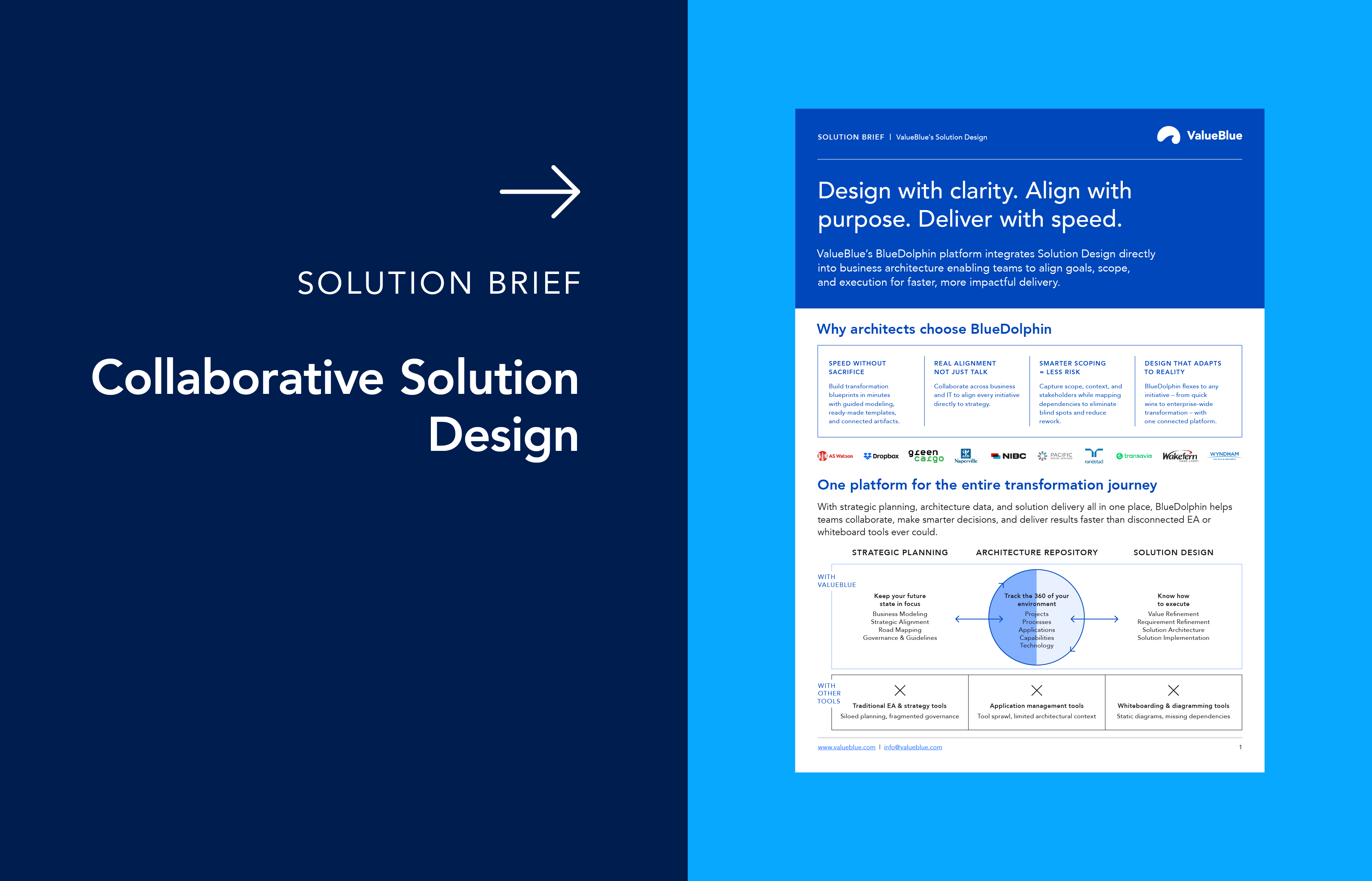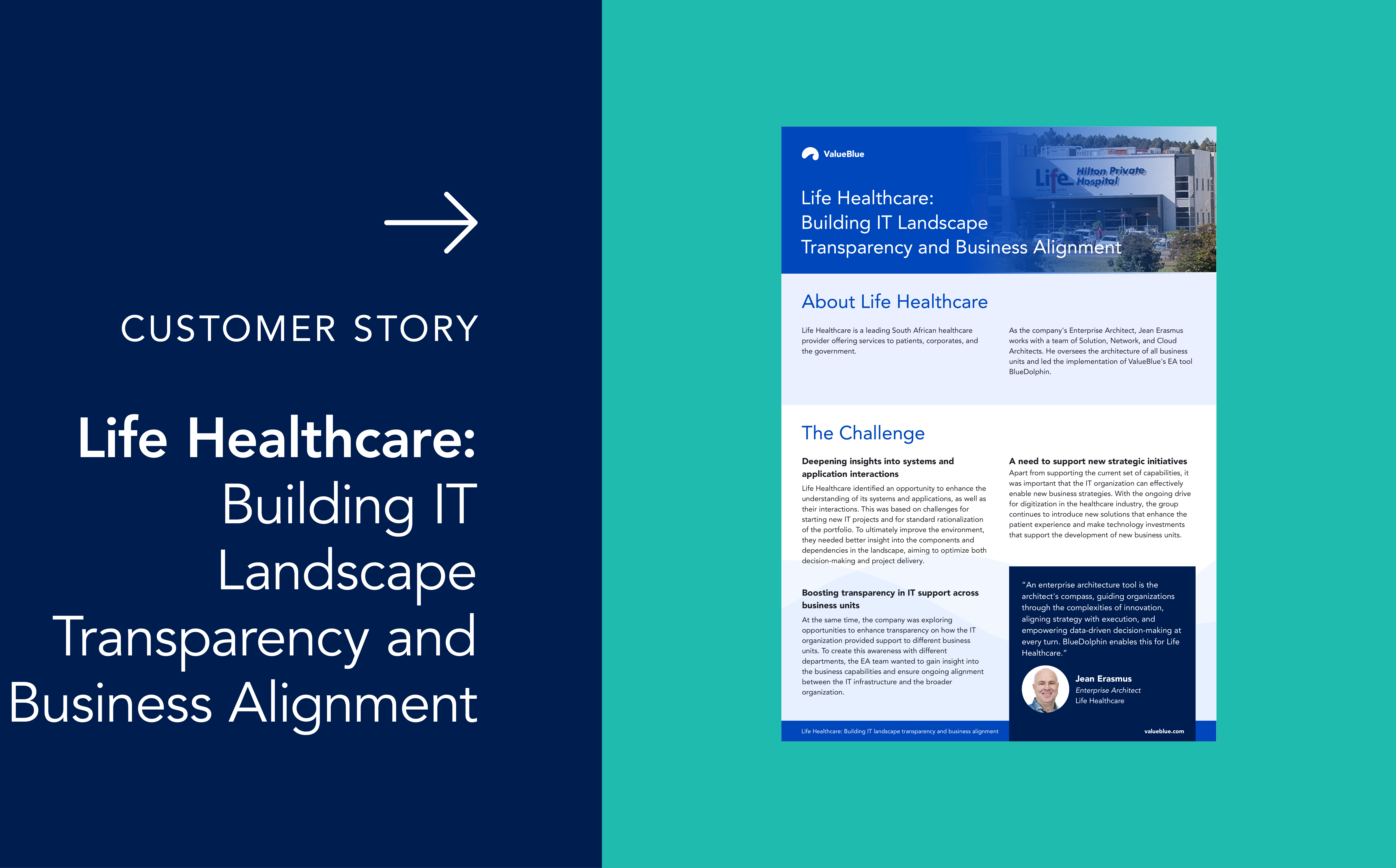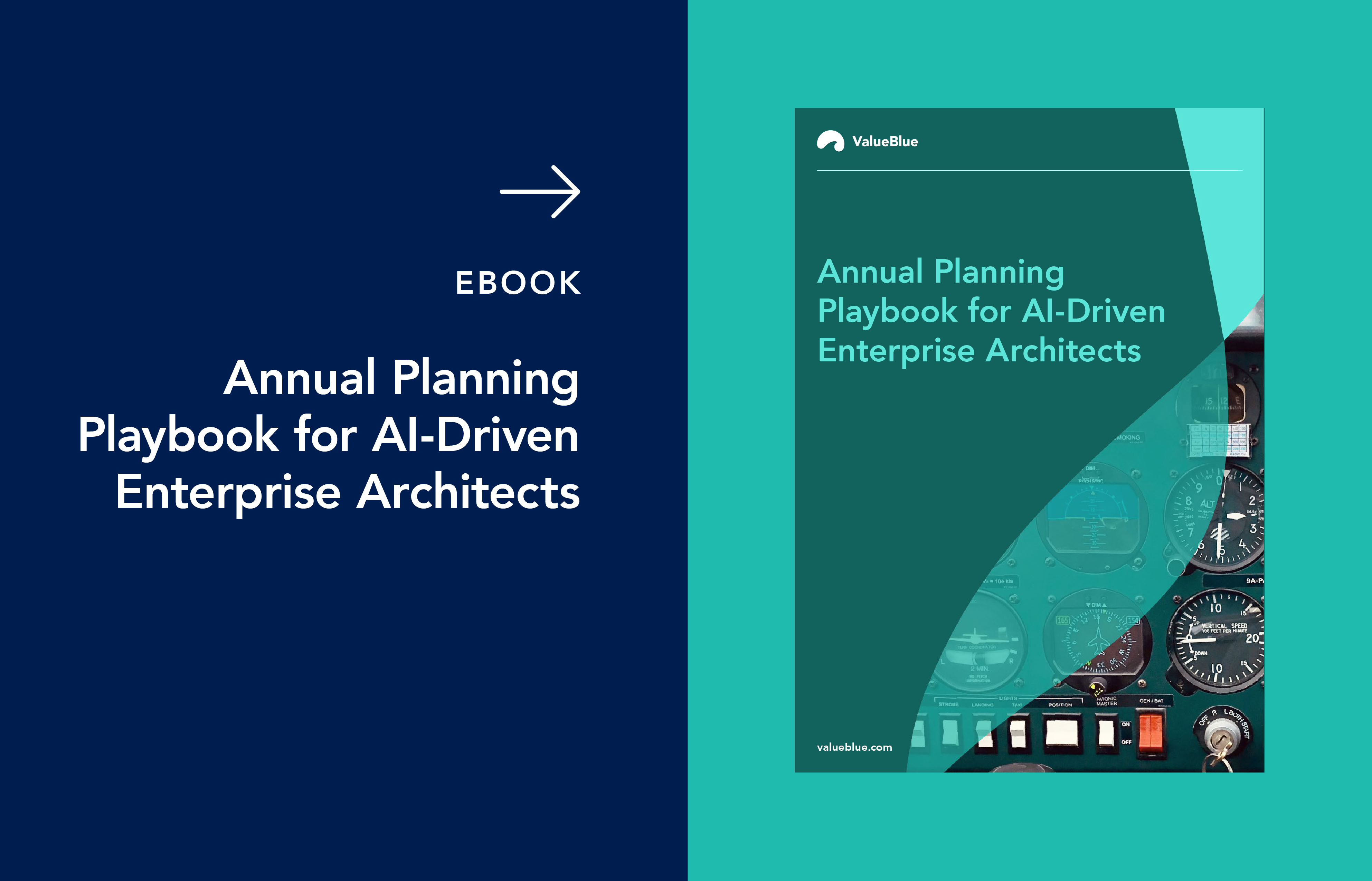Understanding TOGAF®: A Comprehensive Guide to the Framework
One framework that has gained significant traction for helping organizations achieve successful business transformation is TOGAF® – The Open Group Architecture Framework. It offers a structured approach to Enterprise Architecture (EA), ensuring that IT strategies are aligned with the broader business vision.
In this article, we explore what it is, its key components, benefits, disadvantages, and more.
Table of contents:
- What is TOGAF?
- What are the four components of the TOGAF standard?
- What are the 8 Phases of the TOGAF standard?
- What are the benefits of using the TOGAF standard?
- What are the disadvantages of the TOGAF standard?
- Is there a certification or accreditation available for the TOGAF standard?
What is TOGAF?
TOGAF® – The Open Group Architecture Framework – is designed to assist organizations in developing, managing, and implementing their Enterprise Architecture. It provides a systematic approach to ensuring that IT systems and infrastructure meet business needs. Initially introduced in 1995, the TOGAF standard has evolved to accommodate changes in IT and business environments, and its primary goal is to help businesses create a flexible and scalable IT infrastructure aligned with business objectives. The TOGAF standard is widely recognized for its ability to streamline processes, reduce IT complexity, and optimize organization resource allocation.
What are the four components of the TOGAF standard?
The TOGAF standard is divided into four core components that guide organizations in developing and maintaining their enterprise architecture:
- Architecture Development Method (ADM): It outlines a step-by-step process for developing an EA practice. This iterative process guides organizations through defining their architecture, from initial vision to final implementation.
- Enterprise Continuum: A tool that helps organizations classify and organize architectural assets. It ranges from highly generic resources to more specific, customized assets. The continuum allows businesses to use best practices and reusable resources in developing their architecture, promoting consistency and reducing effort.
- Resource Base: This provides organizations with templates, guidelines, and best practices that help them apply the TOGAF standard’s principles effectively. It’s a comprehensive repository that helps architecture teams make informed decisions and maintain high consistency throughout the architecture development process.
- Architecture Capability Framework: It focuses on building the organizational capabilities necessary to support the successful implementation of EA. It covers aspects such as governance, training, and architecture skills development, ensuring that an organization is prepared for both the short-term and long-term requirements of architecture management.
What are the 8 Phases of the TOGAF standard?
Its key feature – the Architecture Development Method (ADM) – is divided into 8 phases that provide a structured approach for developing, implementing, and managing the architecture:
- Phase A: Architecture Vision
The first phase involves creating the overall vision for the architecture. This includes defining its scope, goals, objectives, and high-level requirements. The vision serves as a foundation and guide throughout the subsequent phases. - Phase B: Business Architecture
In this phase, the business architecture is designed. This involves aligning the business goals with the architectural design and creating models representing business functions and processes. The business architecture ensures that IT systems support and enhance the business objectives. - Phase C: Information Systems Architectures (Data and Application Architectures)
Here, the focus shifts to designing the data and application architectures. This phase involves creating models for how data will flow through the organization and how applications will be structured to meet business needs. Effective data and application architectures help reduce redundancy and improve overall efficiency. - Phase D: Technology Architecture
The technology architecture defines the IT infrastructure needed to support the business and information systems. This phase addresses hardware, software, networking, and security requirements to ensure the enterprise architecture is both scalable and secure. - Phase E: Opportunities and Solutions
Once the architecture is defined, it’s time to identify areas for improvement. Phase E focuses on finding opportunities to optimize or enhance the architecture. This could involve adopting new technologies, improving processes, or addressing any gaps in the architecture. - Phase F: Migration Planning
This is where organizations plan the migration from their current architecture to the desired future state. This involves identifying dependencies, risks, and resources required for the transition. A solid migration plan minimizes disruption and ensures a smooth transition. - Phase G: Implementation Governance
In this phase, the implementation of the architecture is overseen to ensure it adheres to the plans and guidelines set out in previous phases. Governance ensures the architecture is implemented as intended, with appropriate controls to address risks and manage resources effectively. - Phase H: Architecture Change Management
The final phase involves managing changes to the architecture over time. As business needs evolve and new technologies emerge, the architecture must adapt. This phase ensures that the architecture remains aligned with the business and continues to deliver value as the organization grows.
Want to see how this works in practice? Book a short BlueDolphin demo.
Learn how you can use TOGAF® in your transformation initiatives.
What are the benefits of using the TOGAF standard?
The TOGAF standard offers numerous benefits to organizations, making it an attractive framework for EA. Some of the key advantages include:
- Alignment with business goals: It ensures that IT systems are developed and managed in line with business goals. This alignment helps organizations create IT solutions that directly contribute to their overall business strategy.
- Improved decision-making: By providing a clear, structured approach to architecture development, the TOGAF standard helps organizations make informed decisions about their IT investments. The framework promotes consistency in decision-making, reducing the risk of costly errors or misaligned initiatives.
- Consistency and standardization: The TOGAF standard promotes standardized processes and resources across the organization. This consistency helps avoid duplication of effort and ensures that architectural decisions are made uniformly and efficiently.
- Cost efficiency: By reducing redundancies, optimizing resources, and streamlining processes, the TOGAF standard can help organizations save time and money. The framework’s focus on reusability also helps cut costs by leveraging existing architectural assets.
- Flexibility: The TOGAF standard is adaptable to organizations of all sizes and industries. Whether you're a small startup or a large multinational corporation, the standard can be tailored to suit your unique needs.
What are the disadvantages of the TOGAF standard?
While it offers many benefits, it is not without its challenges. Some of the potential drawbacks include:
- Long time to value: As you can see above, the first four phases of the TOGAF standard focus on defining architectures and collecting and documenting vast amounts of data on how your company operates. Although very important, this takes time and initially provides little value. Other approaches, such as ‘just-enough architecture’ provide solutions to this.
- Complexity: Its comprehensive nature can be overwhelming for smaller organizations or those with limited experience in EA. Implementing the detailed methodology fully requires a significant investment of time and resources.
- Resource intensive: Implementing the TOGAF standard often requires substantial resources, both in terms of time and personnel. This can be a barrier for organizations with limited budgets or tight schedules.
- Resistance to change: In some organizations, employees may resist the structured approach that the TOGAF standard demands. This can slow down the adoption process and create friction within the organization.
- Requires expertise: Its successful application depends on having skilled architects who understand the framework thoroughly. Without the right expertise, organizations may struggle to implement the standard effectively.
Is there a certification or accreditation available for the TOGAF standard?
Yes, a certification is available for professionals looking to validate their expertise using the framework. The certification is divided into two levels:
- TOGAF® 9 Foundation for beginners, providing an overview of the framework, including its terminology, concepts, and processes.
- TOGAF® 9 Certified for professionals who want to demonstrate their ability to apply the framework in practice. It covers more detailed knowledge and practical application of the framework.
The certification offers numerous benefits, including increased job opportunities, higher earning potential, and recognition as an expert in enterprise architecture. Professionals can obtain certification through training programs and exams offered by accredited training providers.
Embrace a systematic approach to aligning IT with business
TOGAF is a powerful framework that helps organizations align IT systems with business goals, improve architecture development, and optimize resource management. While it offers benefits like better decision-making and cost savings, organizations should also be aware of the challenges in implementing the standard. For professionals seeking to advance their careers, a certification can be a great way to gain expertise and support successful enterprise architecture projects.
As you explore its advantages, you may also be interested in discovering how our tool can further enhance your Enterprise Architecture. Contact us for a free demo today.
TOGAF® is a registered trademark of The Open Group.
Book a demo
Explore how you can design and align your transformation initiatives more effectively - from strategy to execution.
Have questions about Enterprise Architecture best practices?
Our experts are happy to help.





